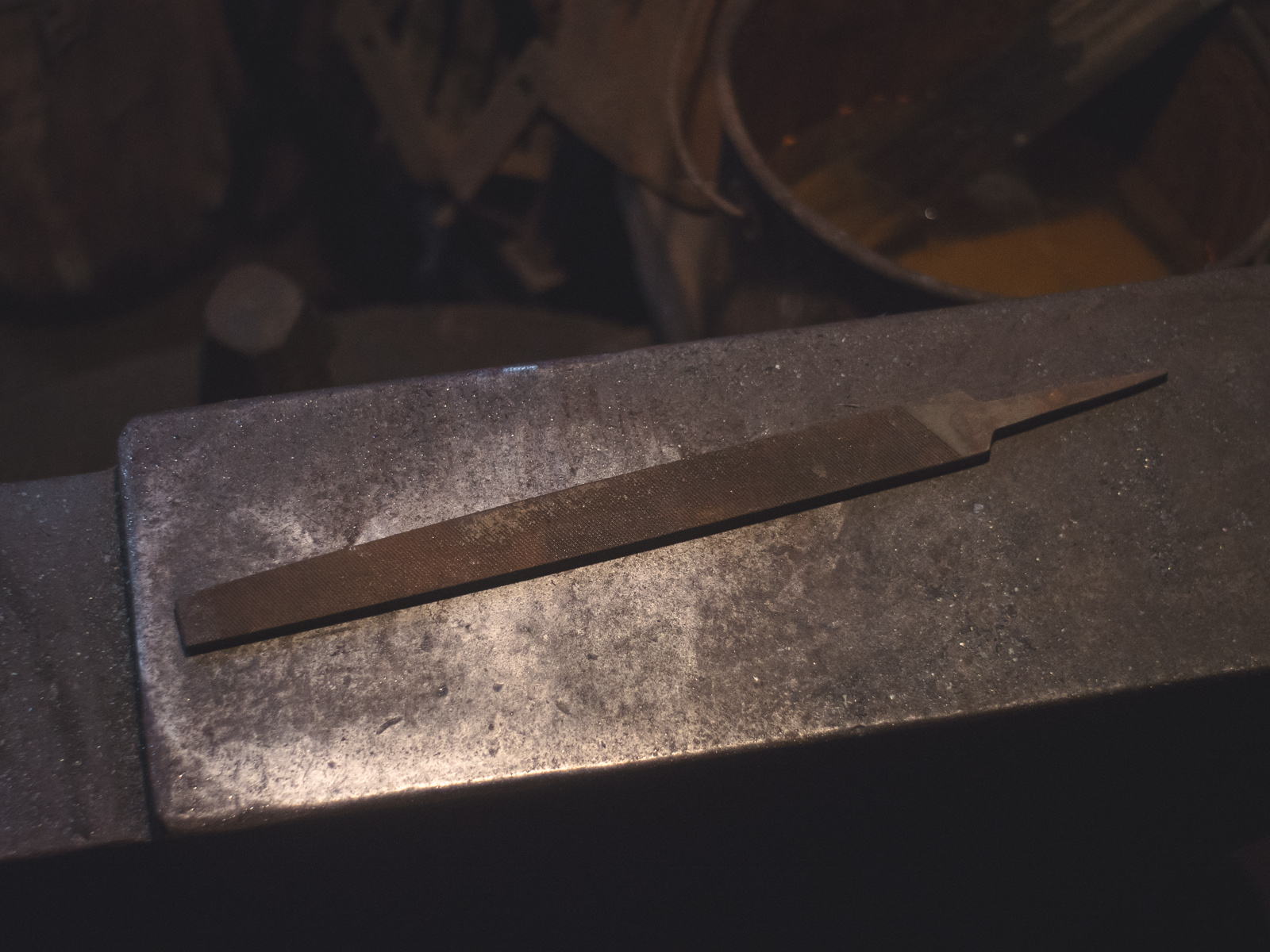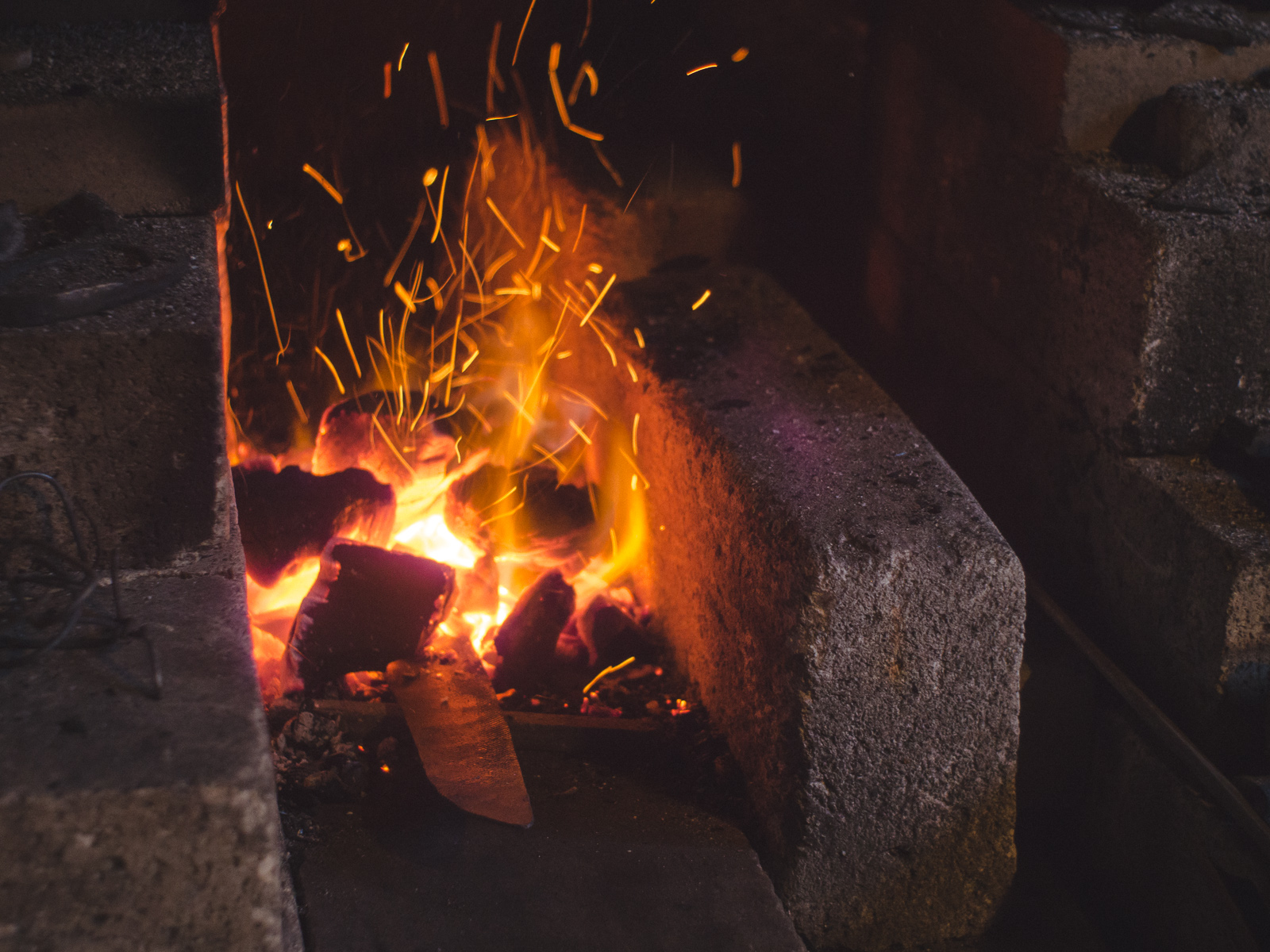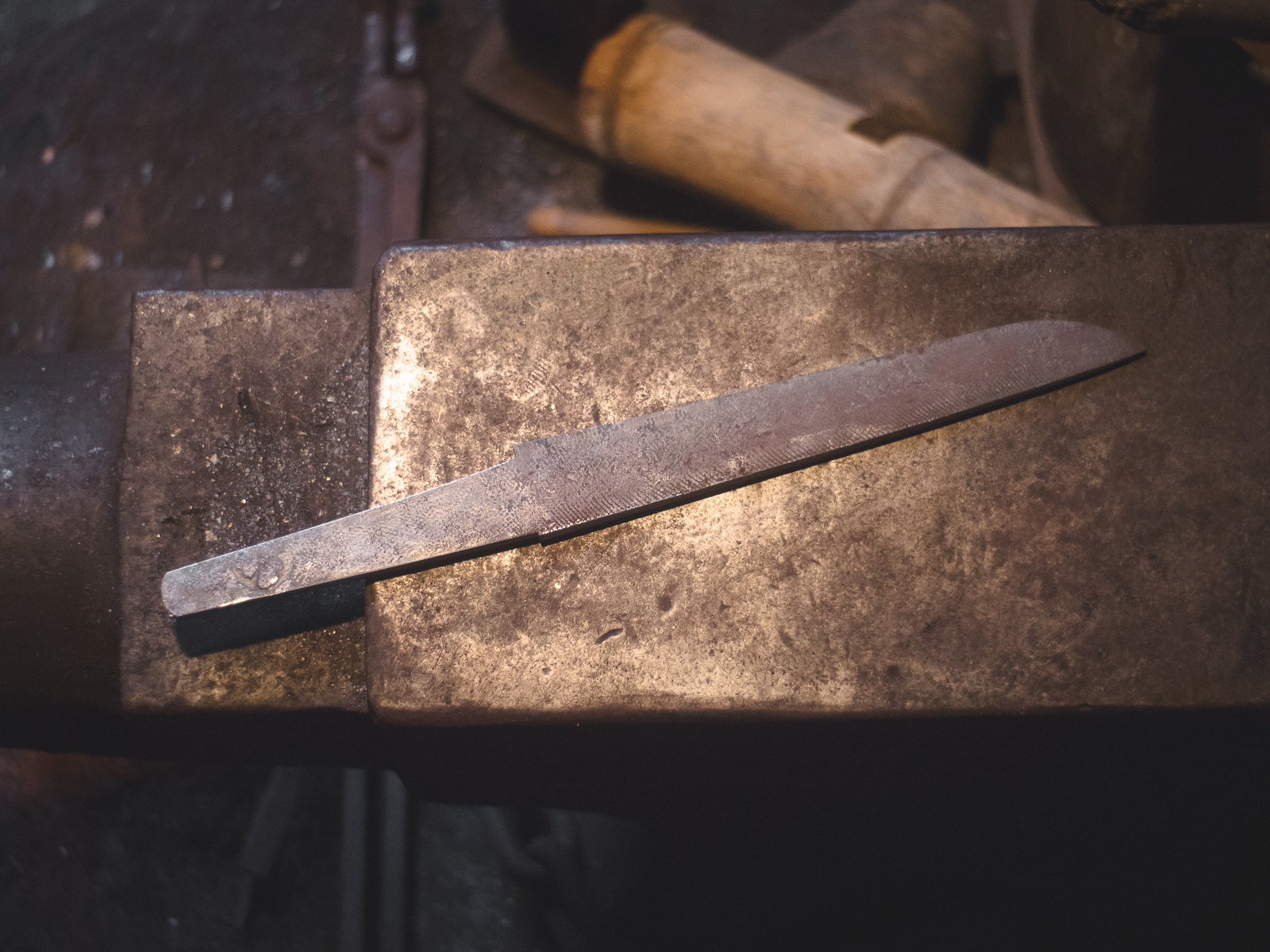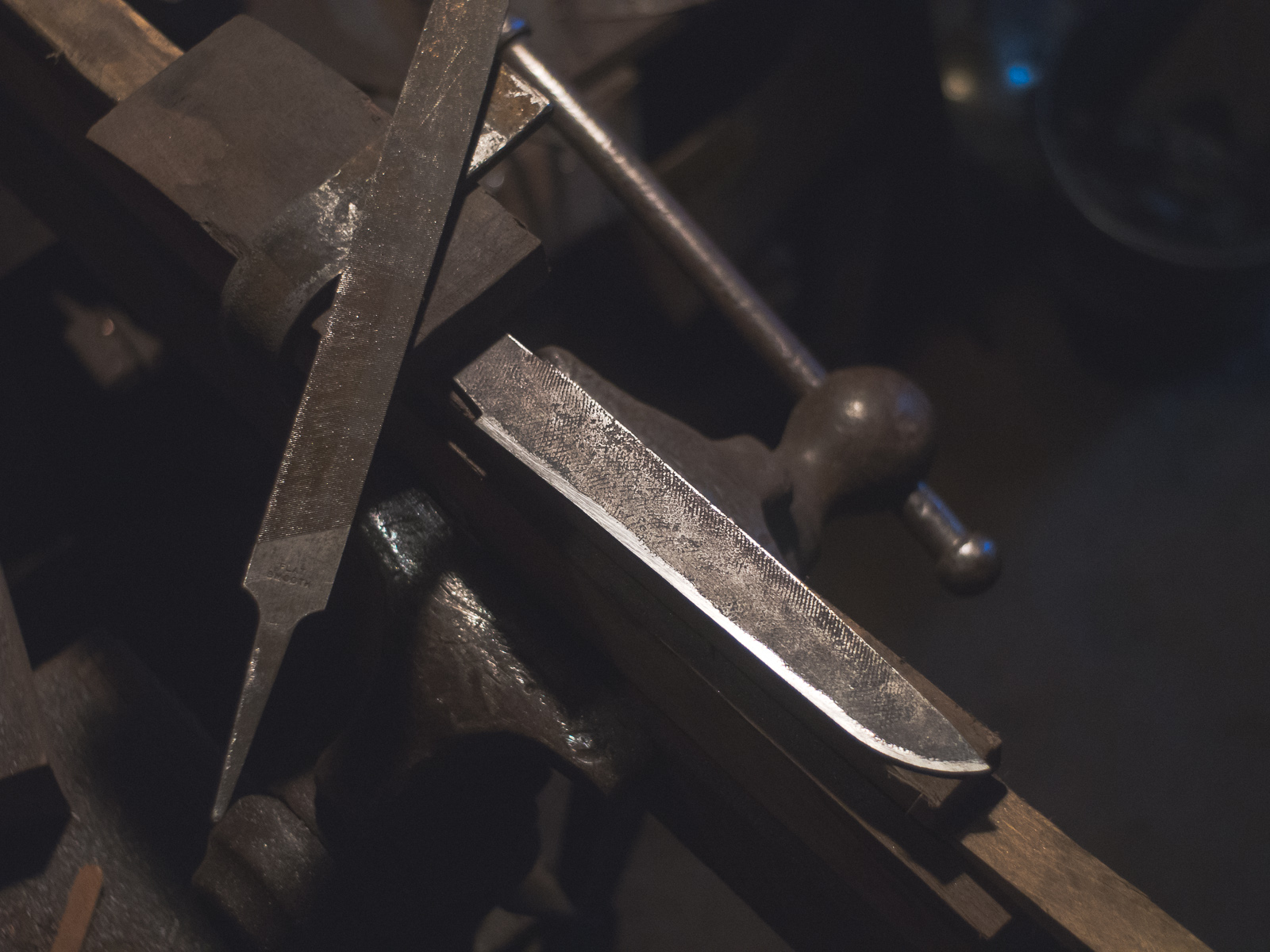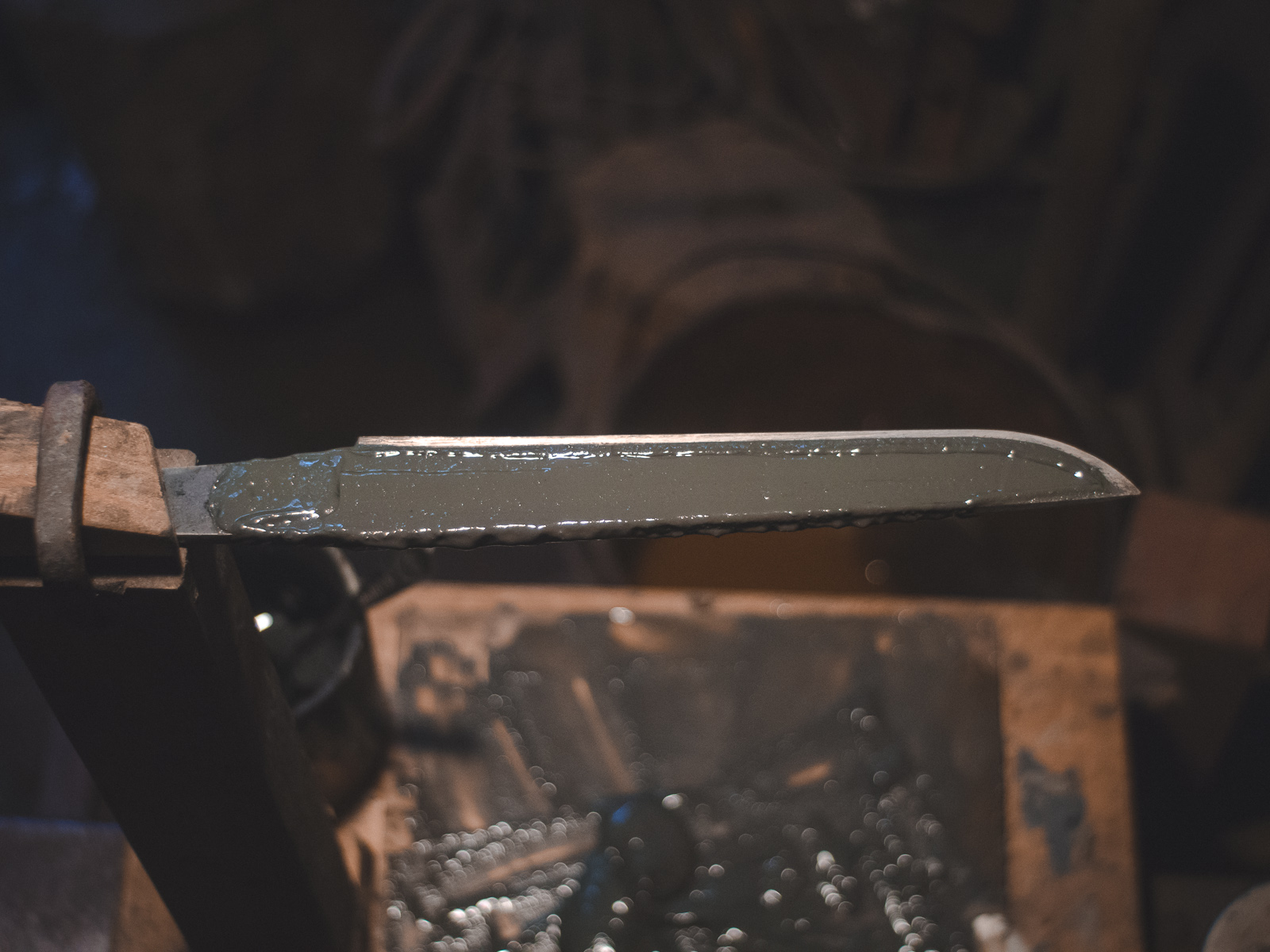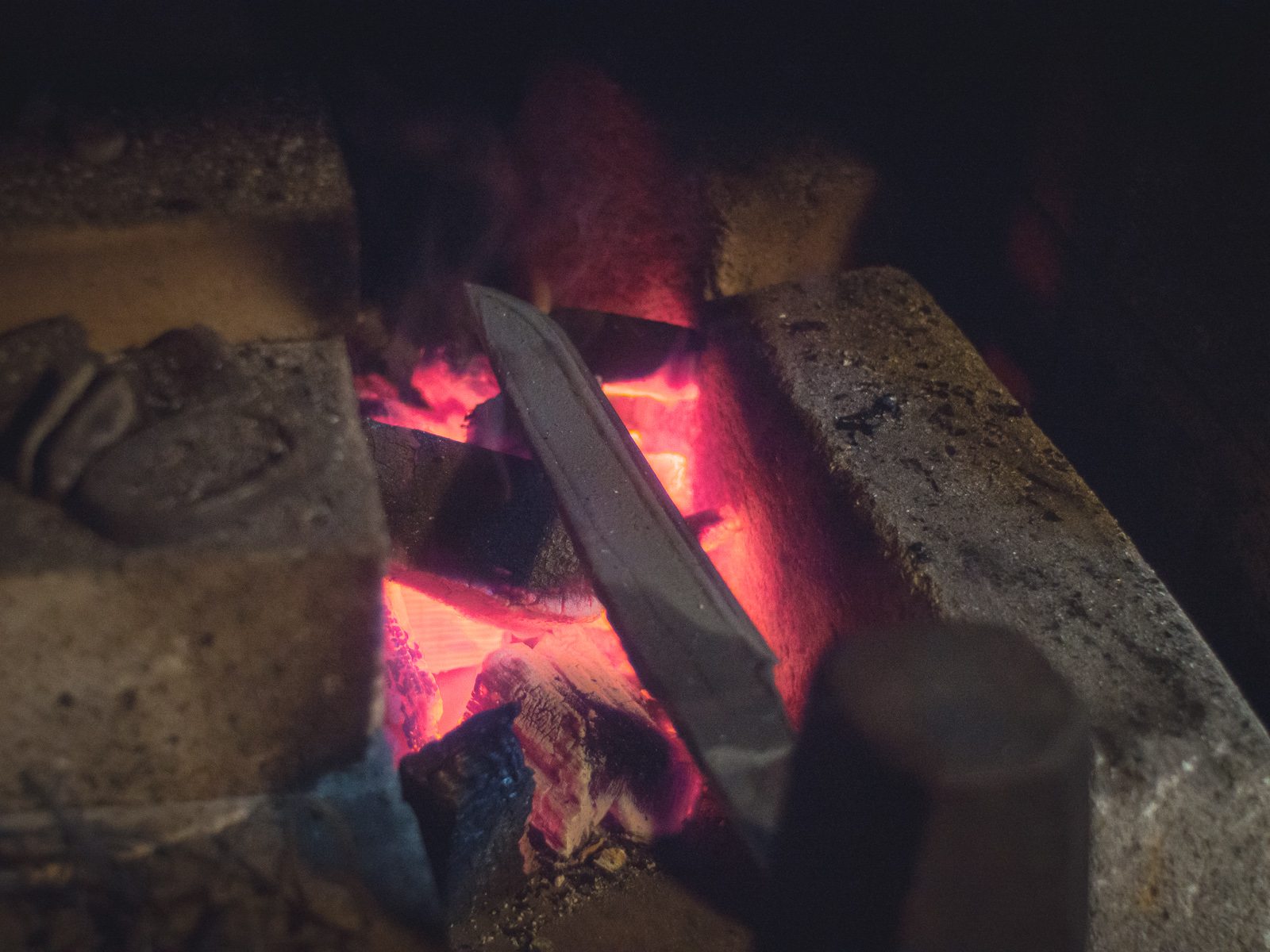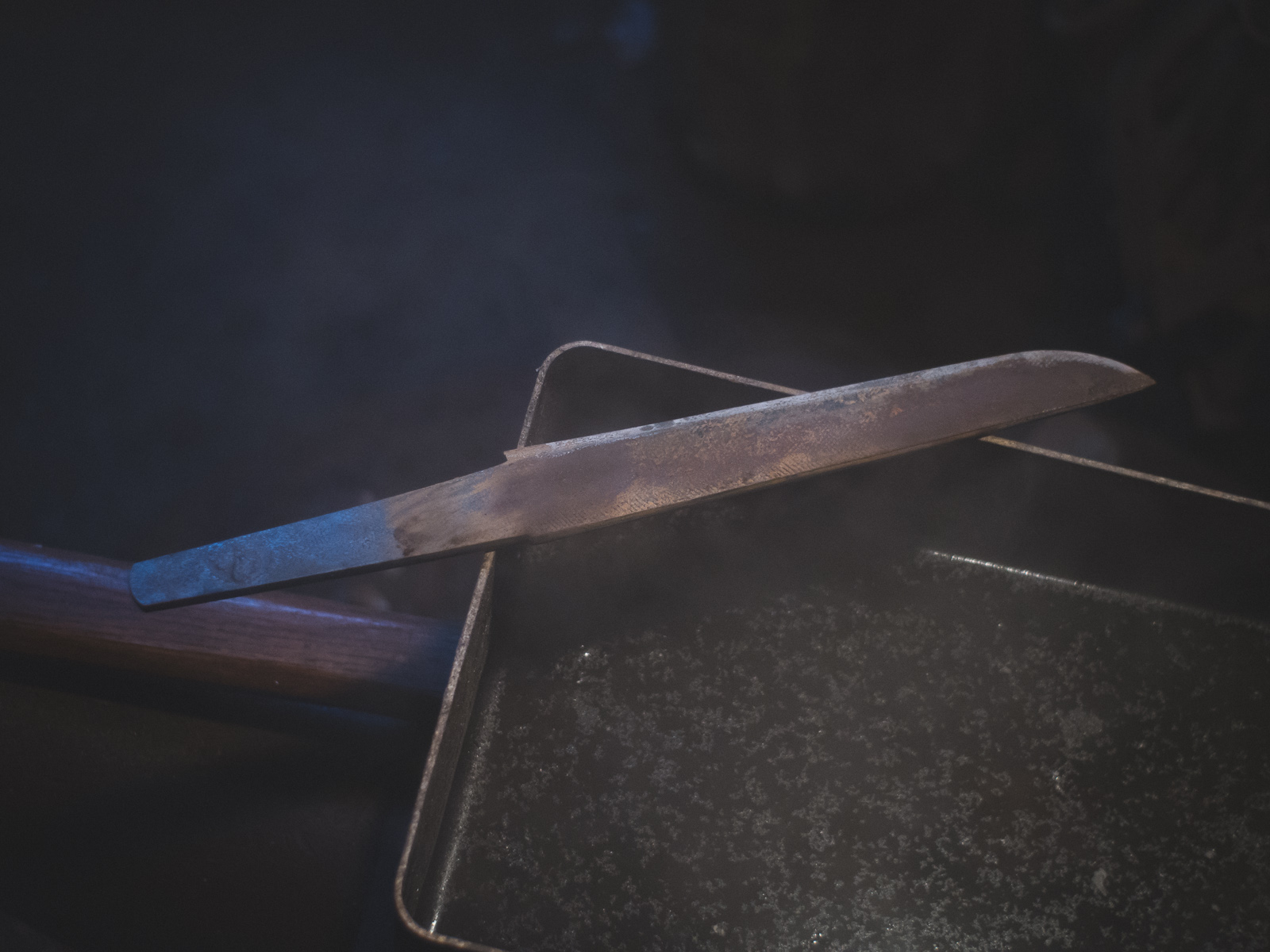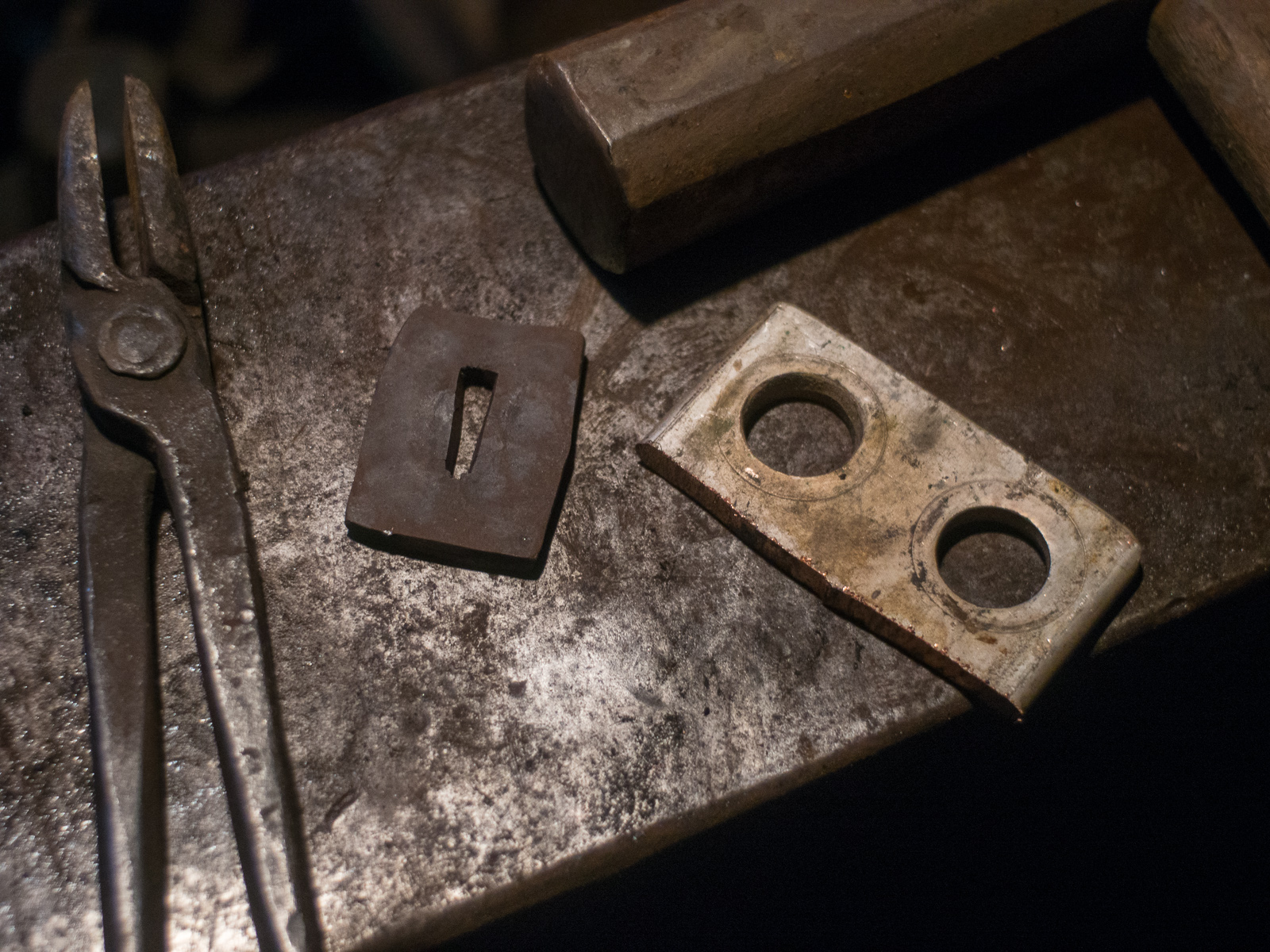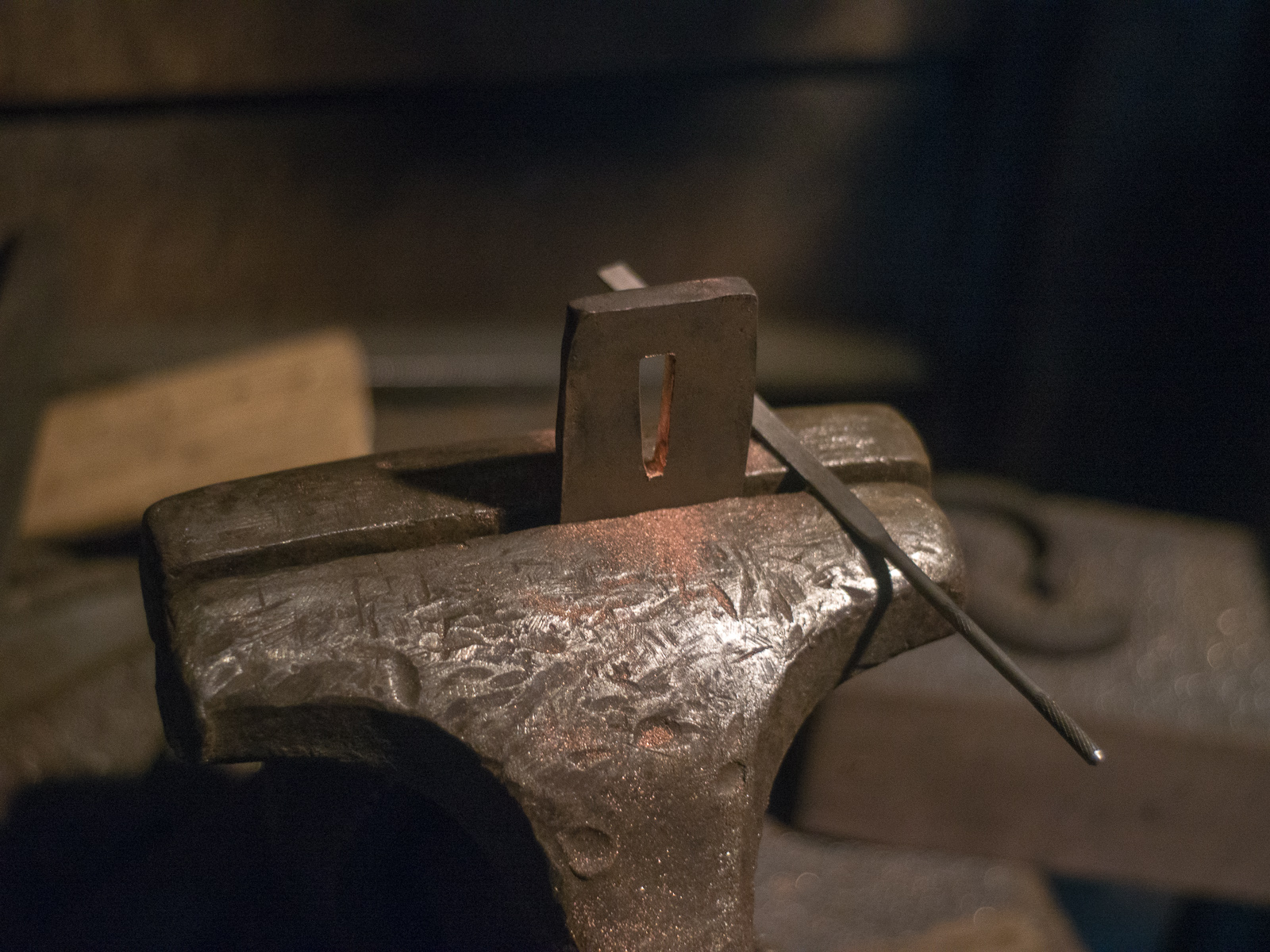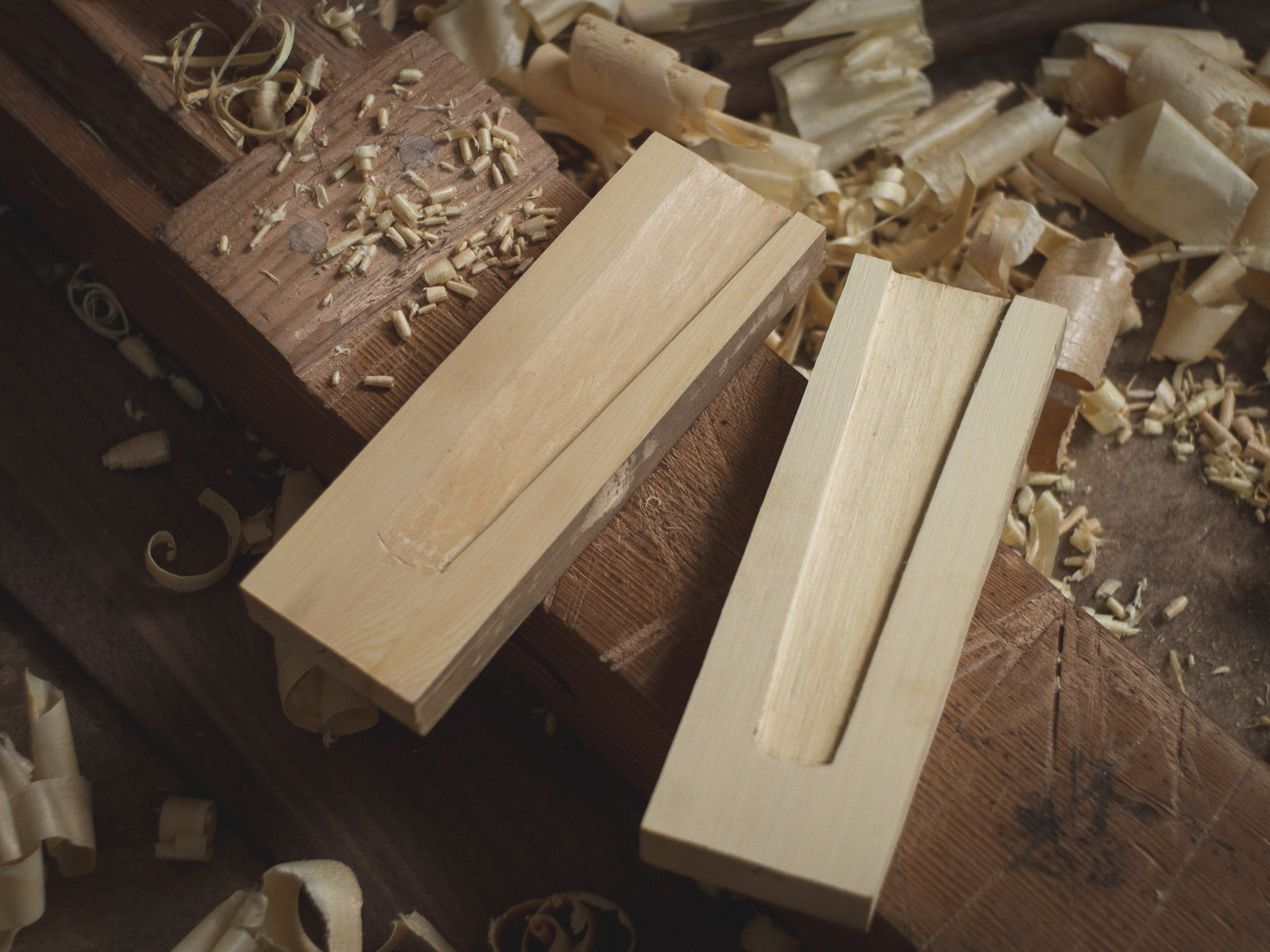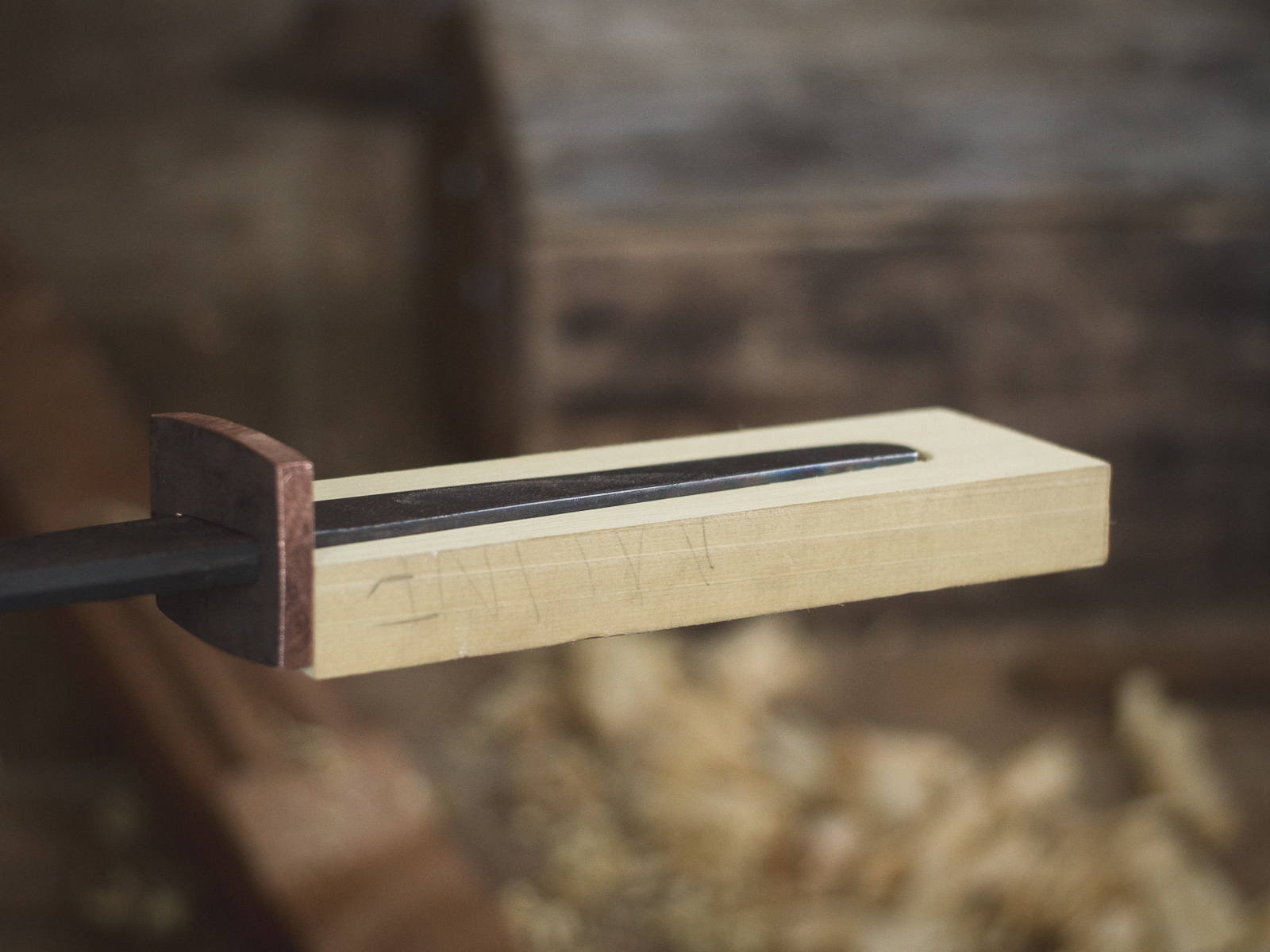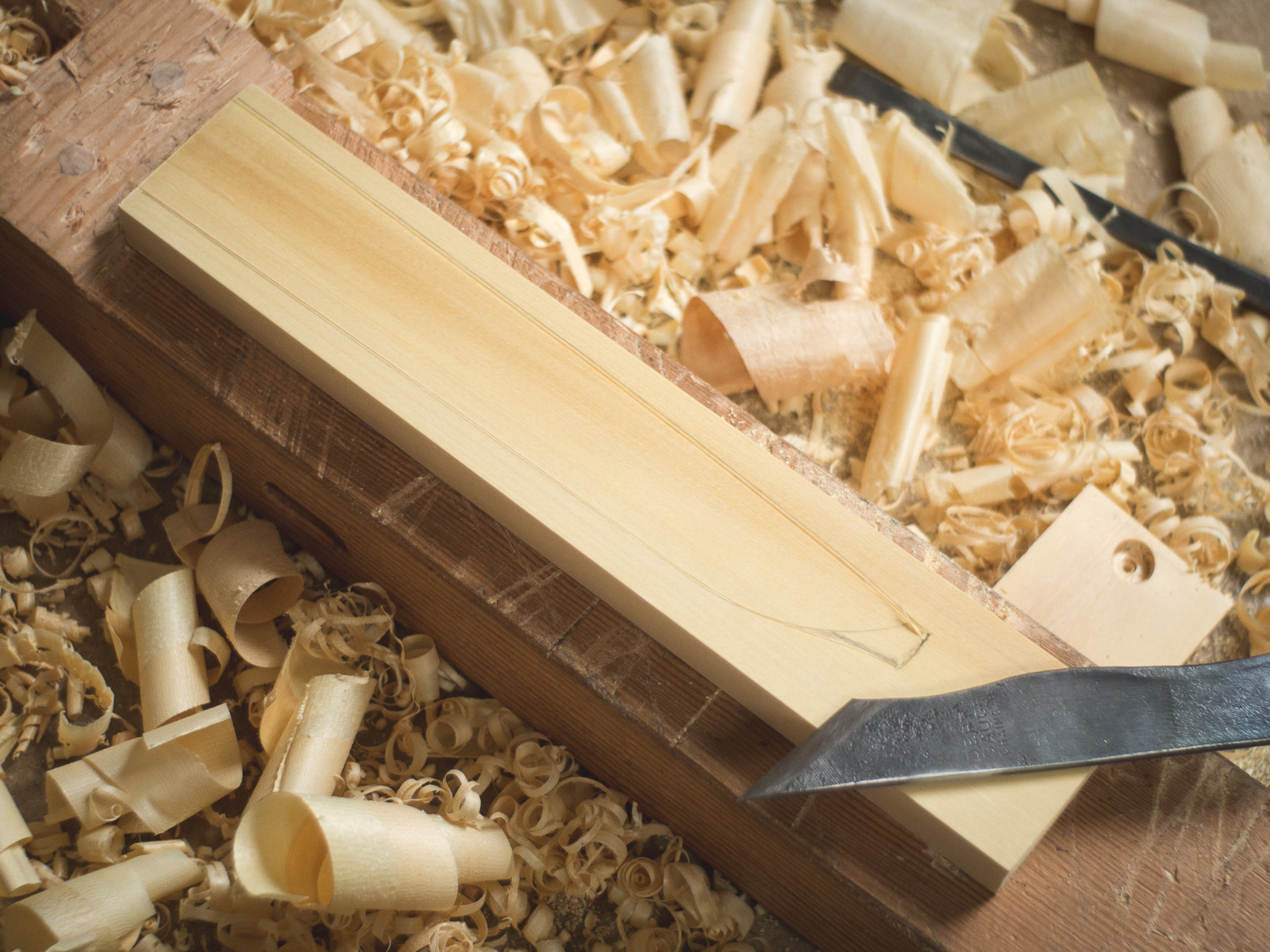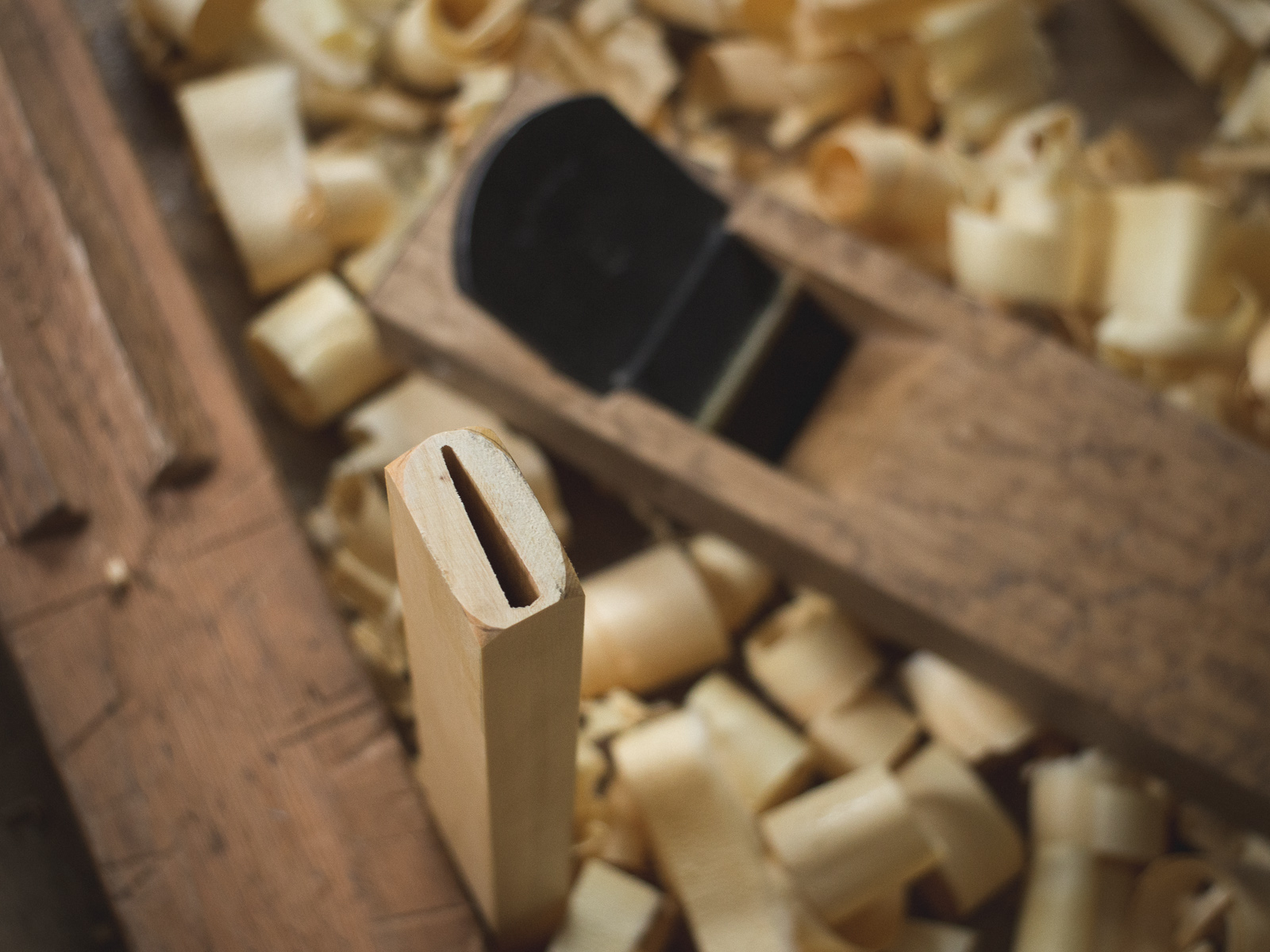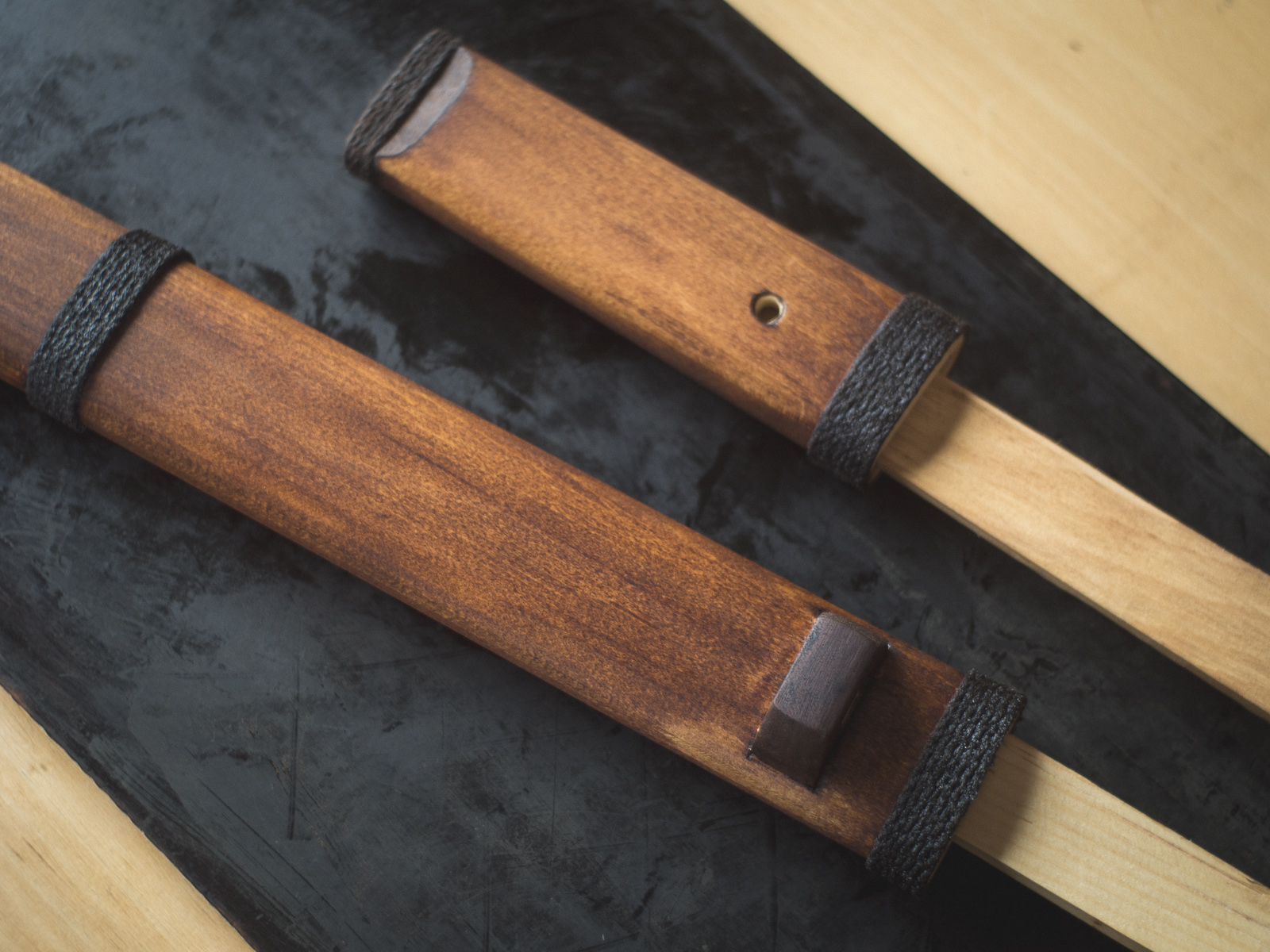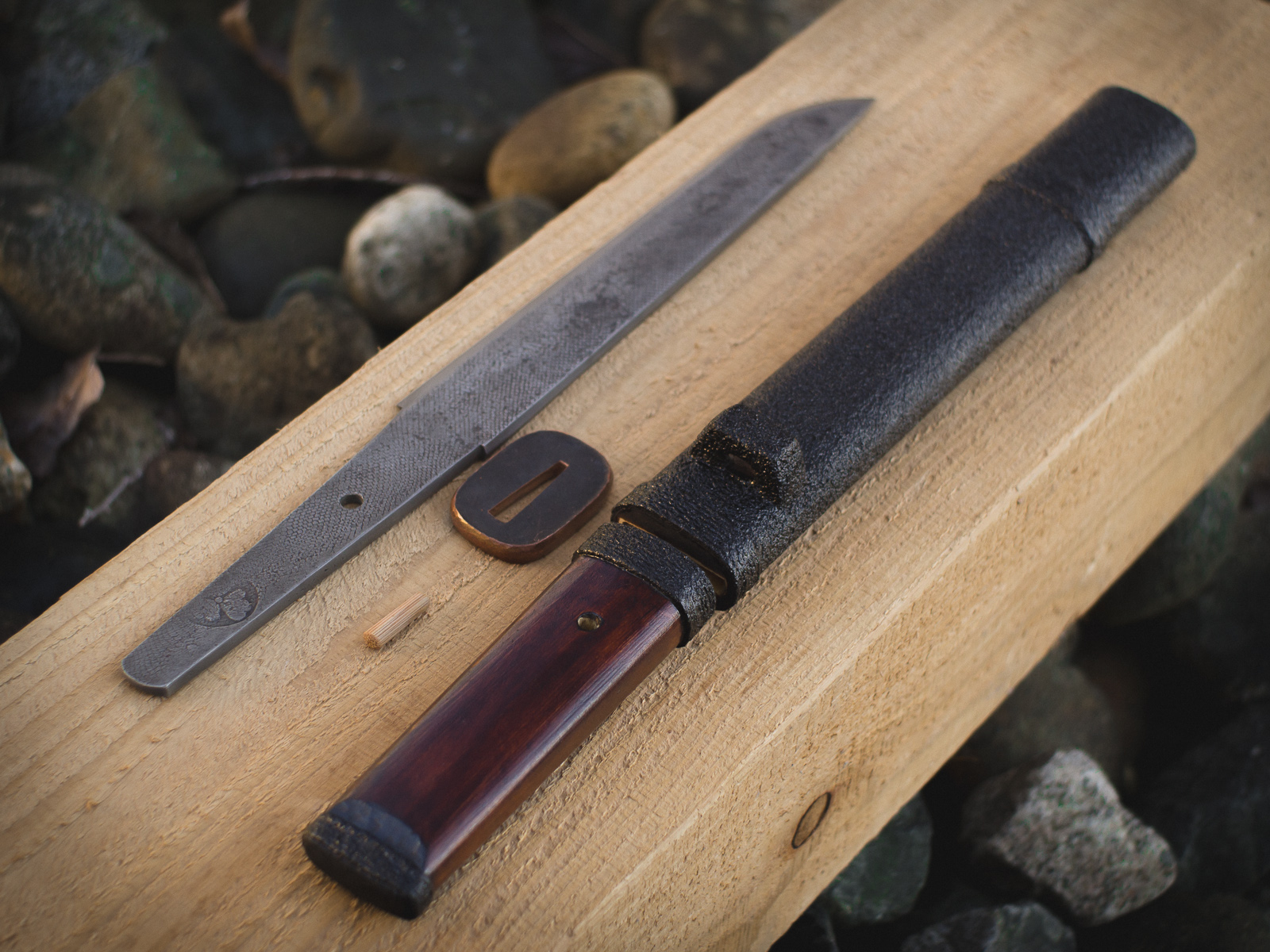Description
A clay tempered blade hand forged in a charcoal fire, water quenched with clay, sharpened with waterstones, and finished simply and humbly in the age-old style of farming and foresting tools traditionally used in managing satoyama lands.
Satoyama are the managed forest areas that border the cultivated fields and the mountain wilds in Japan. Historically they provided soil nutrients, firewood, edible plants, mushrooms, fish, and game, and supported local industries such as farming, timber construction, and charcoal making. The interaction of forest, arable land, wetlands, and streams are an important component of the satoyama landscape. (read more)
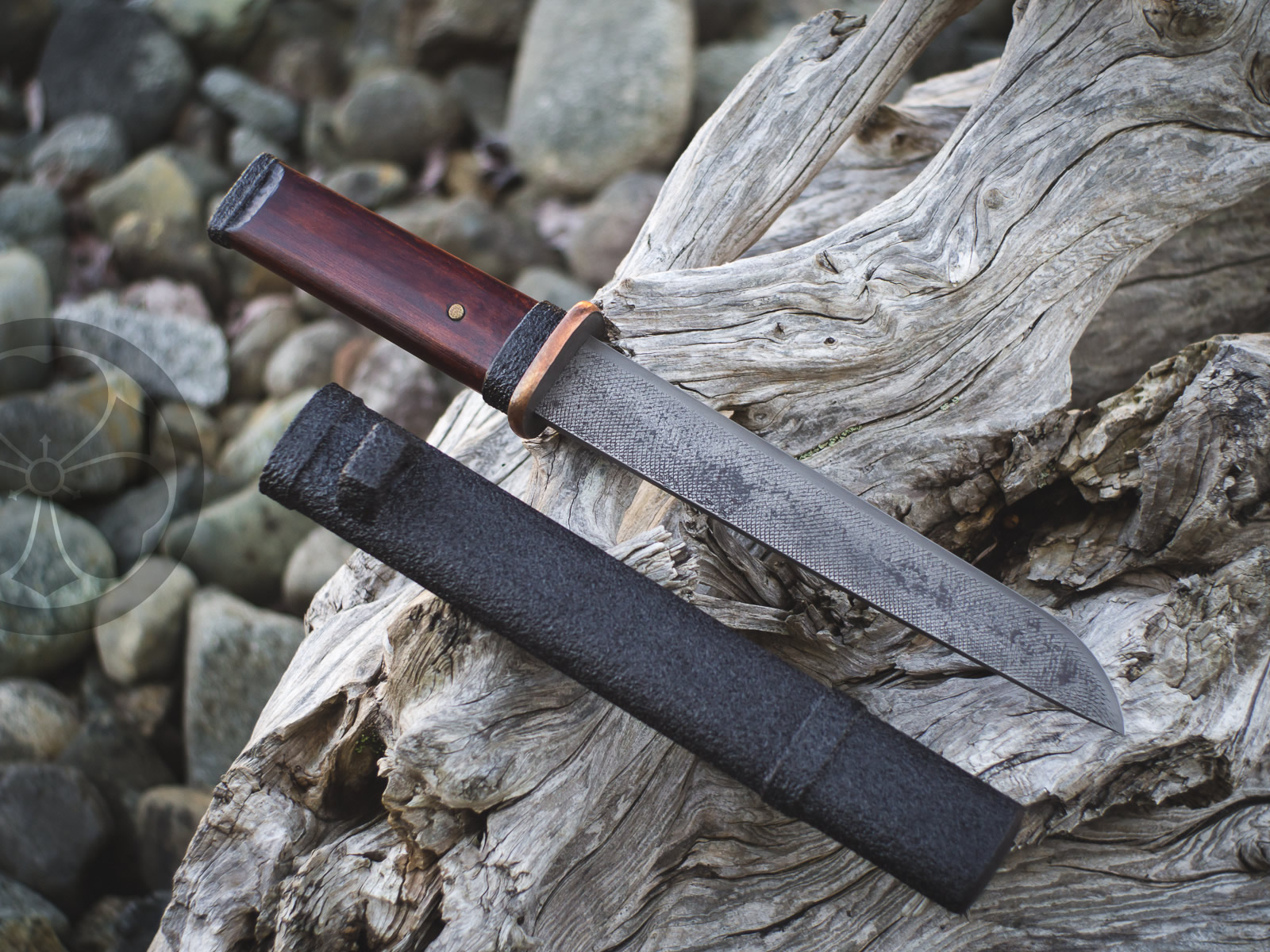
Forged from a reclaimed file, the blade profile of the mountain style tanto has more pronounced belly with slight drop point. The temper of this high carbon steel blade has been left relatively hard in order to hold a keen edge for tasks such as wood carving and hand work. This particular combination of steel and heat treatment is well suited to users who require a good edge and are willing to take care of it.
The tang is constructed in a similar manner to a Japanese sword requiring only a single bamboo peg to hold the knife assembly together. In addition to the sense of beautiful simplicity, this design allows the knife to be taken apart for cleaning, polishing, or sharpening work.
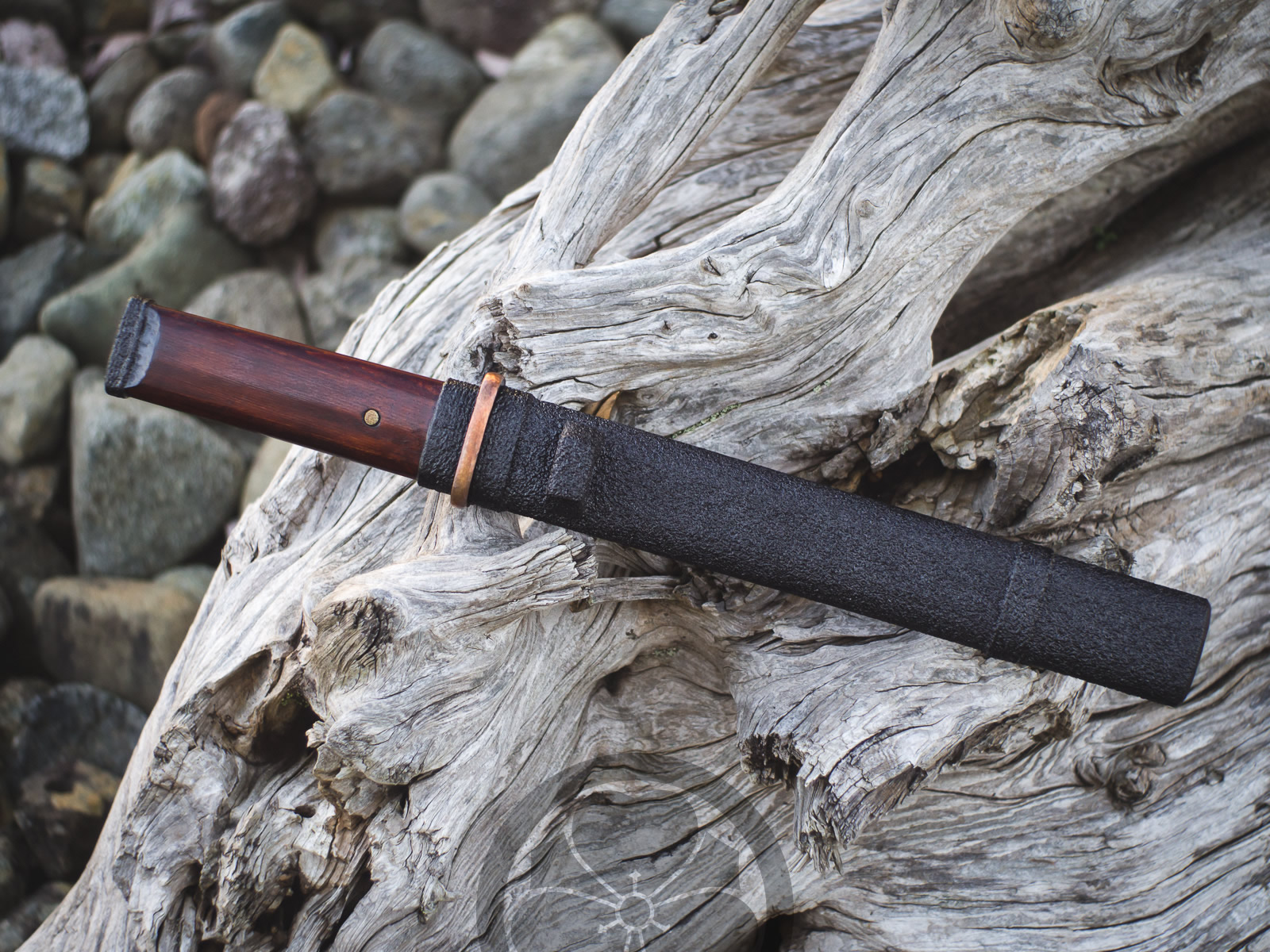
The handle and scabbard were carved from local Nootka Cypress using chisels, planes, and kiridashi knives. The handle is finished with a fukiurushi (wiped layer) surface and the scabbard is finished with traditional ishimeji (stone texture) made with natural urushi lacquer and crushed tea leaves. A forged copper chisagatana style guard with cord wrapped ferrule and removable peg carved from Bamboo complete the handle. The kurikata (cord loop) was carved from black walnut and joined to the scabbard with an inset keyway.
The blade is just under 7.5″ long and the overall length is about 12″. The spine at the munemachi is about 5mm thick.
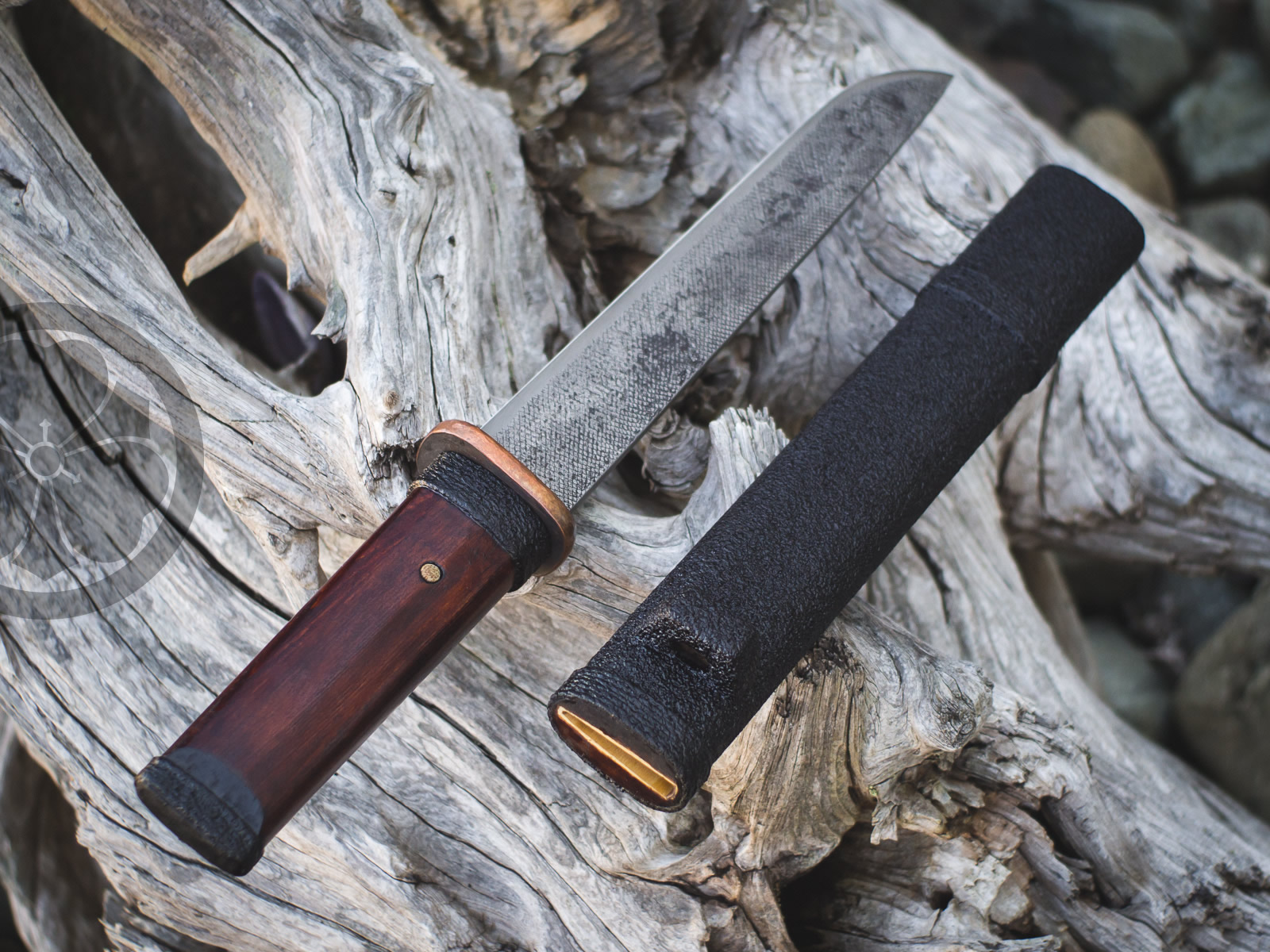
Specifications
Nagasa (blade length): 187mm
Motokasane (blade thickness): 5mm
Motohaba (blade width): 29mm
Sori (curve): uchizori
Nakago (tang): 109mm
Tsuka (handle): 112mm
Koshirae (overall): 340mm
Katachi (geometry): hira-zukuri, iori-mune
Hamon (edge pattern): suguha
Boshi (tip pattern): maru
Nakago (tang): futsu, kuri-jiri, one mekugi-ana, signed near the tip
Mei (signature): hot stamped katabami-ken kamon
Koshirae (mounting): satoyama chisagatana style, issaku
Materials: reclaimed file steel, copper electrical bracket, Nootka Cypress, Black Walnut, cotton cord, natural urushi lacquer, tea leaves, Bamboo
This piece is in a private collection in California.
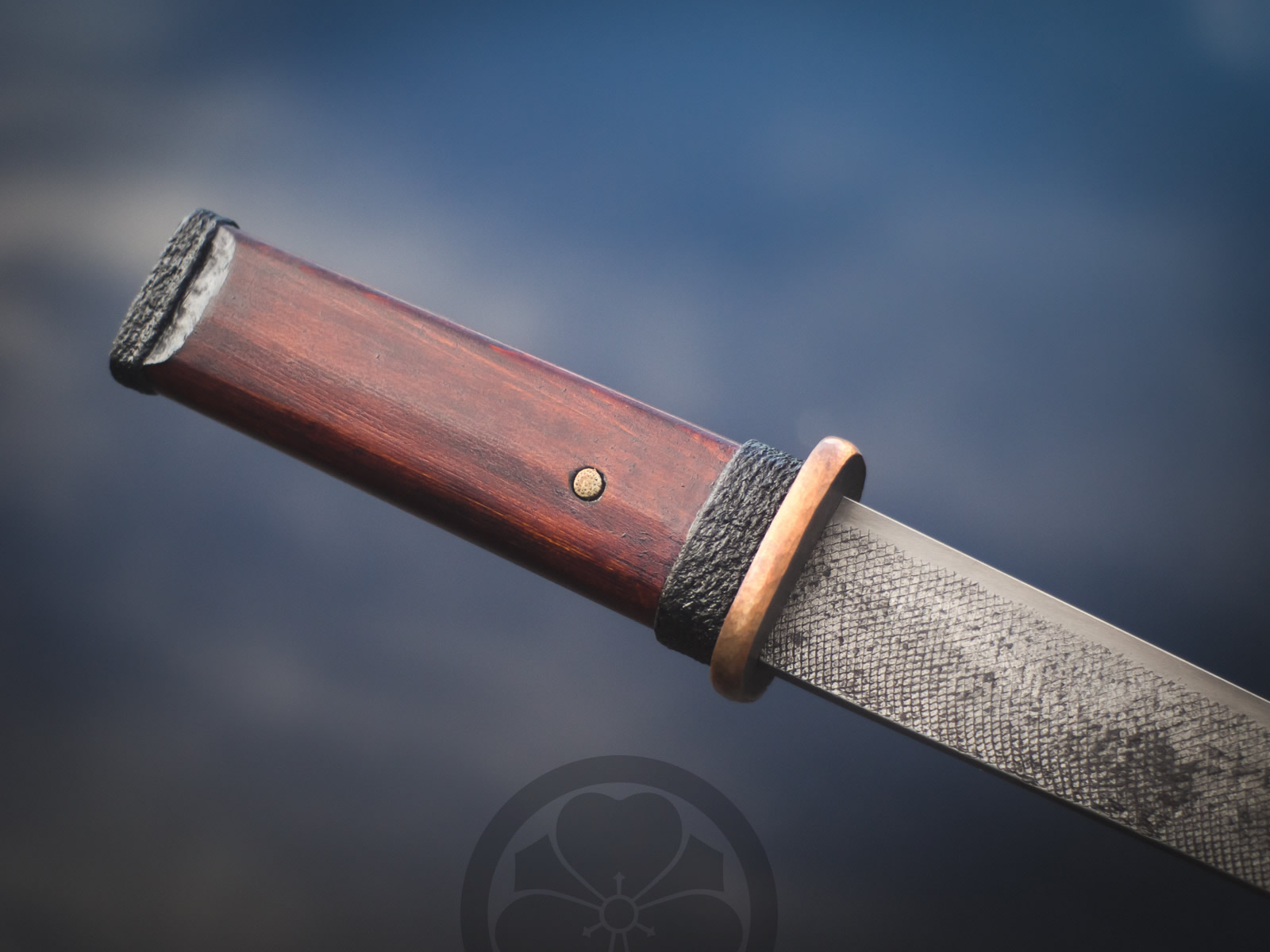
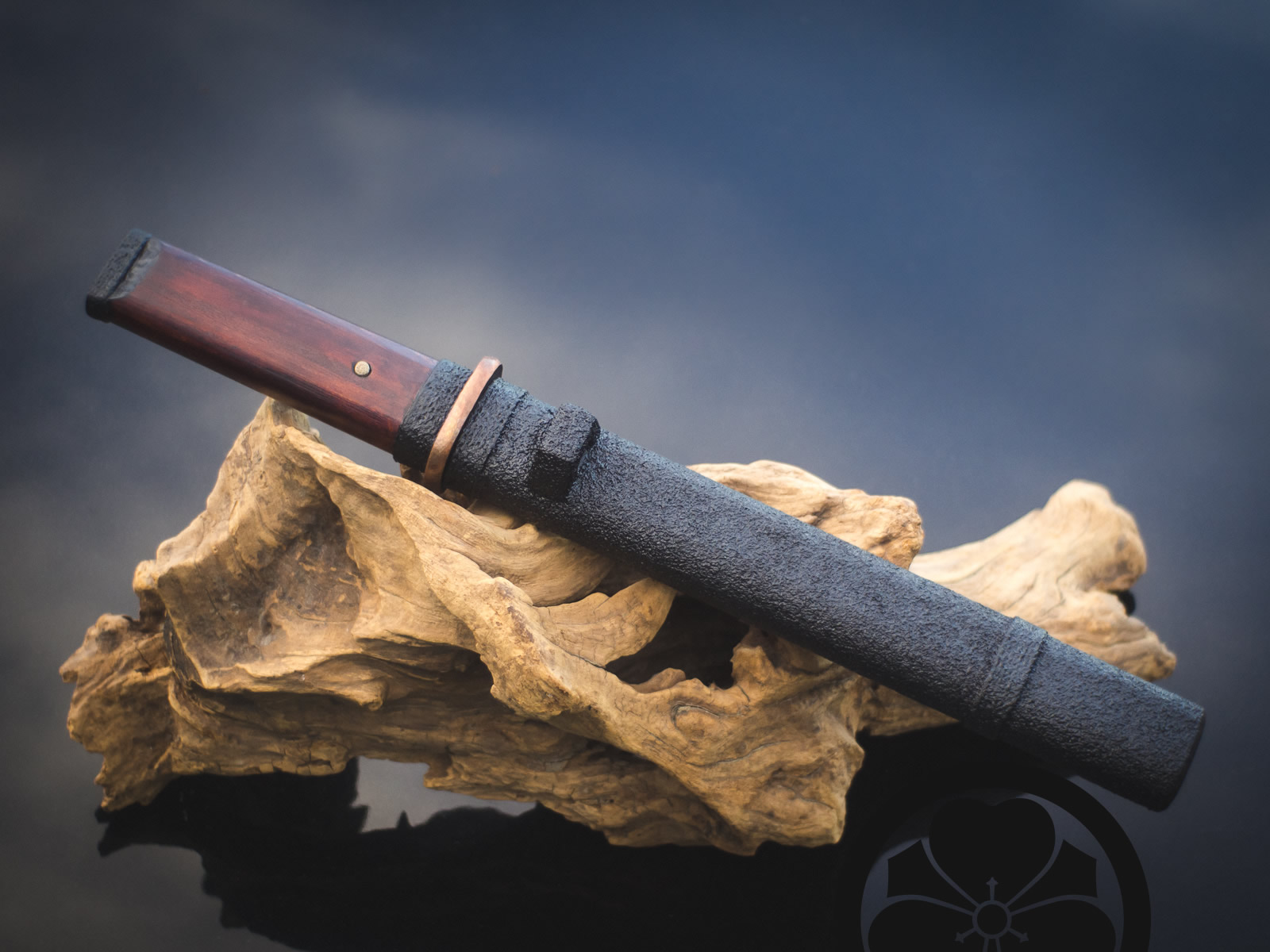
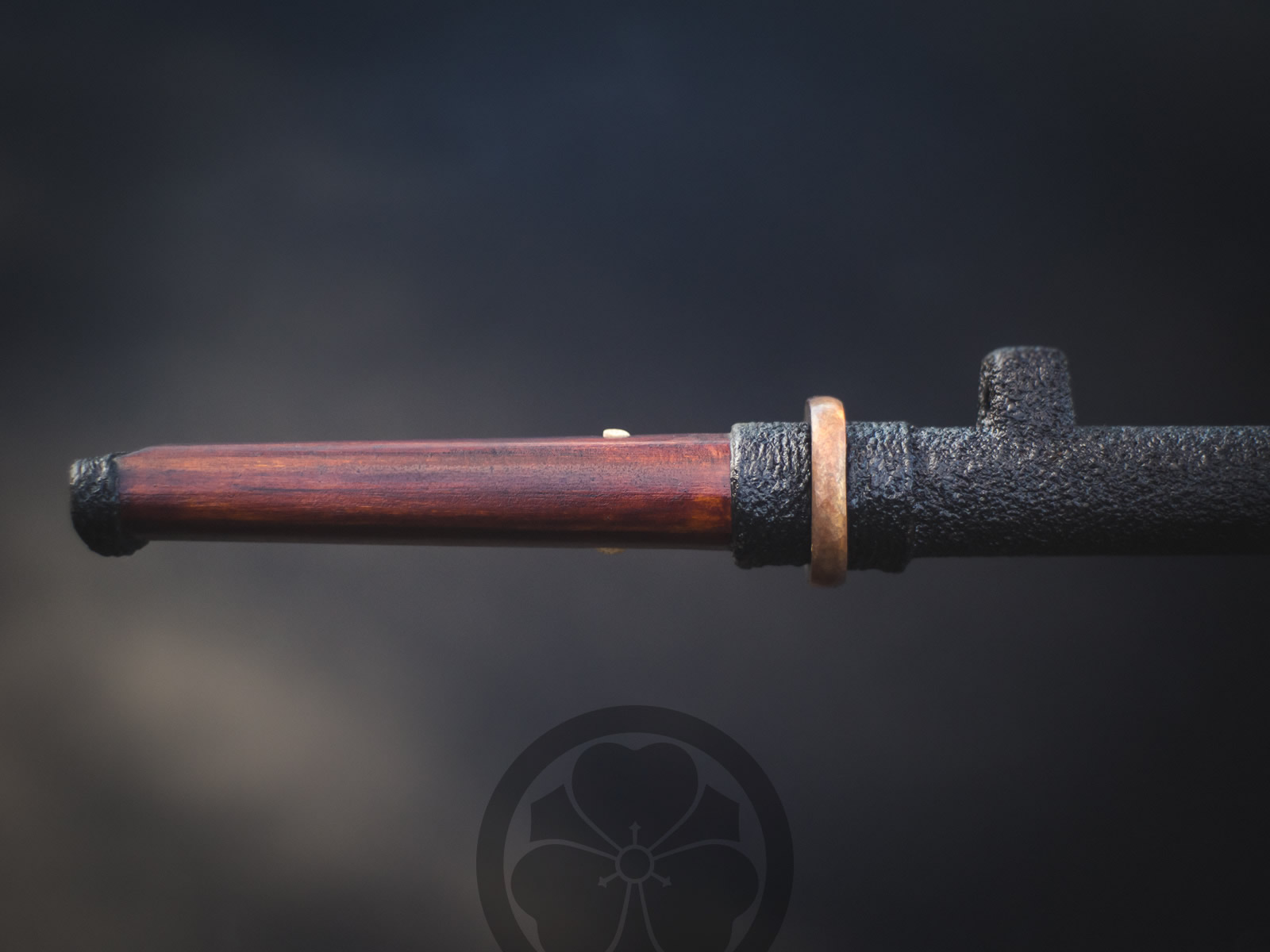
Process
Read more about the process of making this tanto here, or design your own here.
